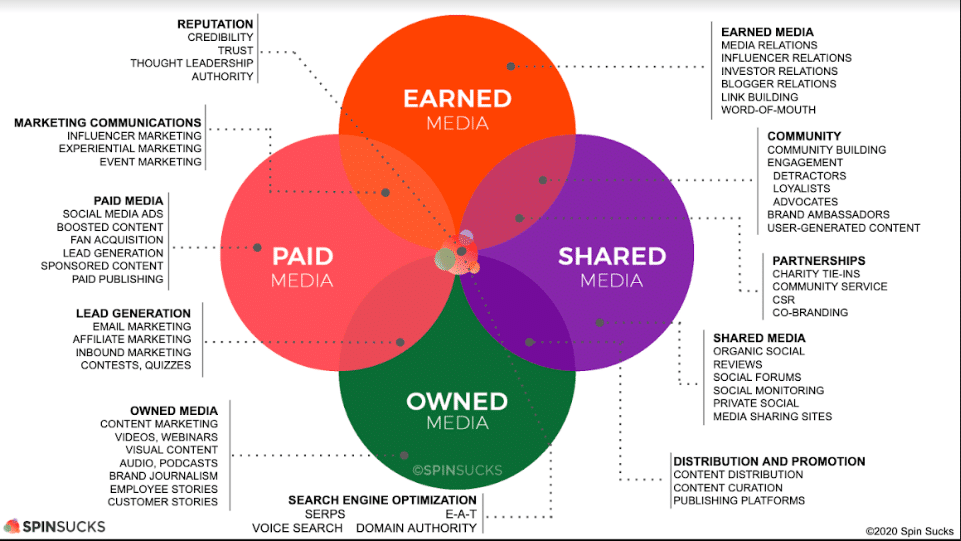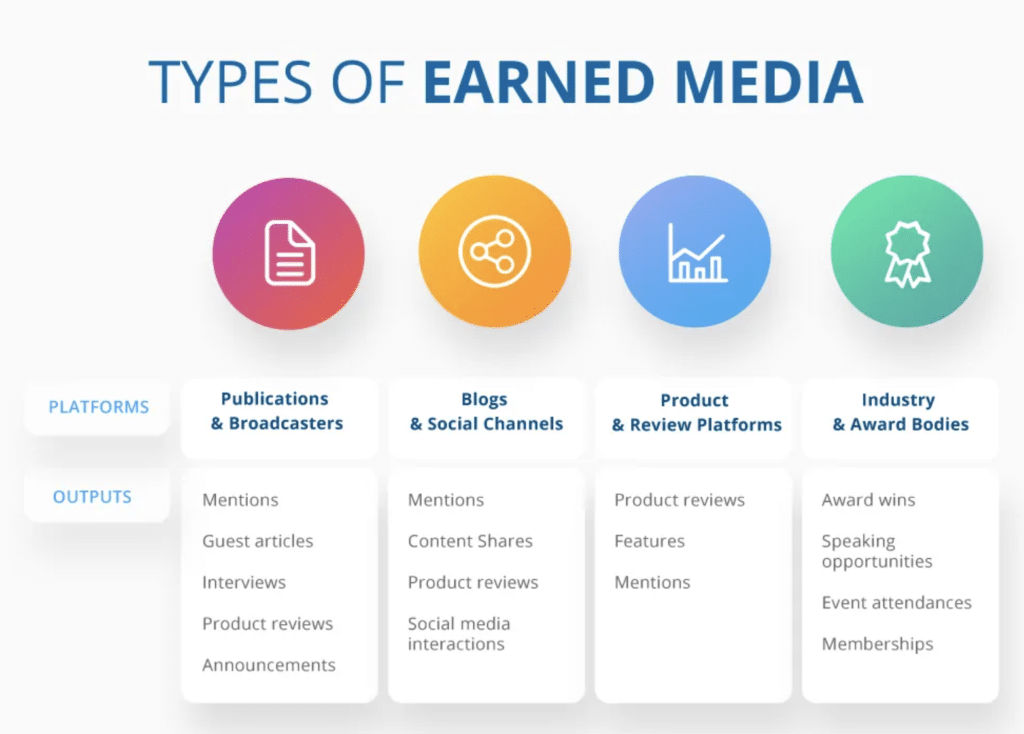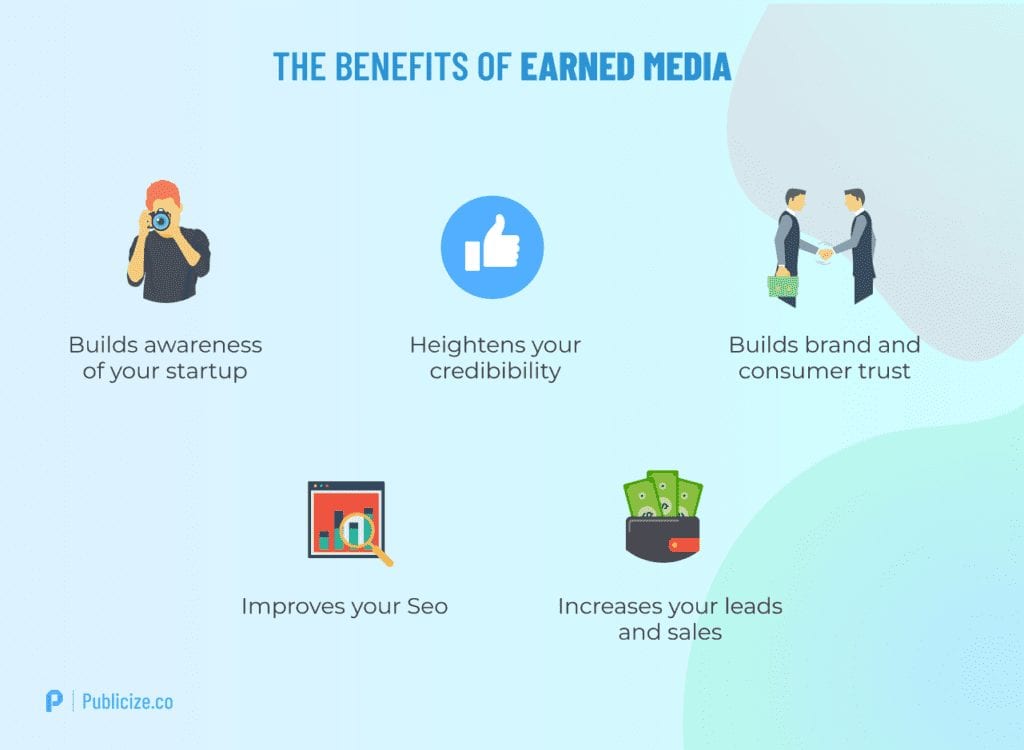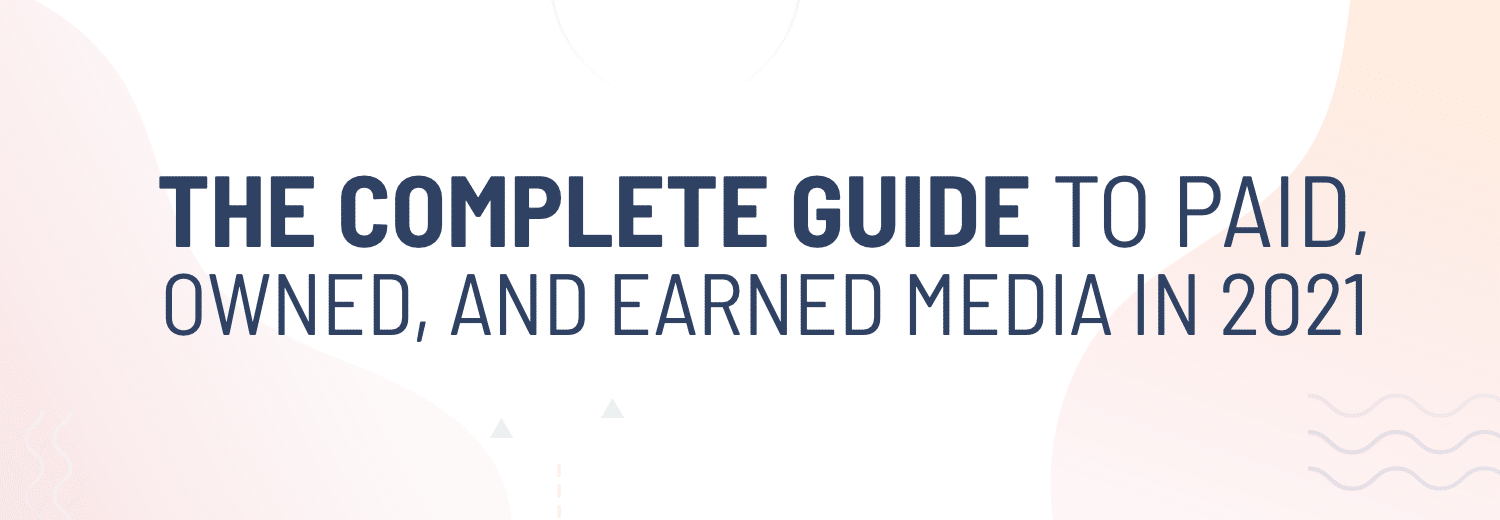A recent study revealed that an average North American adult spends almost 8 hours consuming digital paid, earned, shared and owned media every day. This means your target audience is nearly always plugged into ‘The Matrix’ (a reference for the kids).
This shift online has made digital PR and content marketing some of the most effective ways of reaching your customers and driving qualified leads for your business. However, one of the frequent mistakes a lot of companies make in this practice is targeting one type of media over another.
Let’s get this straight:
An effective content strategy doesn’t rely on one singular tactic.
To be successful, you need a mix of:
- Paid media
- Owned media
- Earned media
- Shared media
Most marketers know the answer to the question: ‘What is the difference between paid, earned, shared and owned media?’, but it’s a bit unclear to others.
That’s why we’ve created this guide. Let’s get into it.
What Is The PESO Model?
For the marketing professionals out there, this probably looks awfully familiar to you.
The PESO model is the shorthand for combining paid, earned, shared and owned media.
The brainchild of this model was Gini Dietrich, author of Spin Sucks:

As you can see, all four of these exist symbiotically, and for your PR and marketing to succeed, you need to align them.
In the next section of the guide, we’re going to cover the ways in which you can measure paid, owned, earned and shared media.
What is paid media
Paid media is the simplest to explain.
Paid media refers to any content you pay to promote. We also know this as sponsored content.
In the days of traditional PR and marketing, this would have been through TV adverts, print advertising, or radio commercials. However, the game has changed. In 2022, marketing and PR have shifted online and so has paid media. In fact, Statista has projected that we’ll spend $565.8 billion on digital ads in 2022 worldwide and has predicted this number to only grow.
Here are some examples of the different paid media you can utilize:
- Social media advertising – Social media advertising, is something that startups need for an effective social media marketing strategy. Social media advertising allows you to target social media users in a way previously unimaginable. And with over 3.6 billion people using social media, which experts project to rise to 4.41 billion by 2025, why wouldn’t you use it?
- Pay Per Click (PPC) advertising – Commonly known as PPC, this is a form of internet advertising in which companies pay a fee each time someone clicks on their ad. We usually see this form of advertising on search engine sites.
- Video ads – Advertising that occurs before or after a video stream begins.
- Pop-ups – Pop-ups are usually a small window that appears within a few seconds of entering a site.
- Display ads – Similar to a pop-up ads, display ads usually differ in size and placement within a website.
Paid media can now be more targeted towards your audience or buyer persona (the higher your budget, the more effective that targeting is).
PRO TIP: Paid media can be great for driving traffic to your site. However, it has limited reach and effectiveness. A lot of this is due to the increasing use of ad blockers. Ad-blocking plugins can’t limit Organic media’s reach. Furthermore, it’s a better way to build consumer trust around your startups.
What is earned media?
Earned media is arguably the cornerstone of PR.
Earned media is any material that is written about you or your business that you don’t pay for. To put it simply, earned media is publicity.
As earned media is owned by third parties, you may be thinking that earned media success is entirely out of your hands. However, that’s not true. If you produce good content, the (earned media) world is your oyster.
Here are some practices you can incorporate when trying to win earned media:
- Make the best quality content possible – This is a no-brainer. Your startup should always be aiming to produce content that addresses common pain points among your target audience. This will help position you as a thought leader within your industry. In addition, it increases your chances of your guest blog pitches being accepted and of users sharing your content on social media.
- Use HARO or press request sites – HARO (also known as Help A Reporter Out) is a tool that journalists use to get expert quotes or sources for their stories. If you find a news story that’s relevant to your startup or industry, submit a response and you may win earned media. However, there are a couple of drawbacks to using these sites. Competition is fierce and you have to sift through A LOT of emails. Although, by preparing yourself with some quick response templates and learning how to filter requests, you’ll increase your chances of winning publicity.
Choose the right publication – Producing, pitching and sharing content takes time and energy. Therefore, you want to ensure that your earned media wins are targeted toward publications relevant to you. For example, if you’re a fintech startup, you’re not going to be chasing up Vogue for a guest article. The next decision you want to make is whether you want to target top-tier publications or niche industry publications. Check out this image below to weigh up the differences:

Companies can win earned media wherever they see fit. Here’s a handy image of different Earned Media Examples:

What is owned media?
Owned media definition is simple: Any content that you create yourself and publish on your own channels is owned media.
Unlike earned media, you have complete control over this form of content creation.
Unfortunately, we frequently see owned media as a promotional exercise and don’t take it as seriously as paid or earned media.
Here are some reasons for you to invest in a comprehensive owned media strategy:
- Build your social proof
- Increase thought leadership
- Control (or own) your message
- Build brand identity
Although, in order for your owned media to be worthwhile, you need to ensure the content you produce is valuable, educational, and not overly self-promotional.
Here are some examples of owned media content you can produce:

What is shared media
Shared media refers to social media or user-generated content.
Since the emergence of social media as a PR tool, shared media has become increasingly popular.
Why?
It’s extremely cost-effective and gets you in front of your actual target audience (followers on social media).
PRO TIP: Due to the recent algorithm updates on Facebook, it’s harder to see posts from businesses organically. Much in the same way you need a combination of paid, owned and earned media, you need a combination of organic and paid posts when it comes to social media marketing.
How is paid media measured?
There are a plethora of different metrics you can choose to measure your paid media success.
However, before you make any decision on what metrics you measure, it’s worth defining your business objectives.
This isn’t limited to paid media — it’s true for all media in the PESO model.
Here’s a handy image that outlines how your media goals and business objectives influence each other:

NOTE: Before you start splashing big bucks on paid media, you need to build credibility. And, as we’ve mentioned before, organic content is the only way to do this.
If you promote content on social media, you use the various analytical tools built into those channels. Facebook, Twitter, LinkedIn, and Instagram all have their own analytics. However, there are a bunch of other social media analytics tools out there.
If you’re using PPC ads, Google Adwords allows you to measure the performance of your paid Google campaigns.
Moreover, Google Analytics splits paid search, paid social and display into separate channels. This gives you the power to track which paid campaigns increase traffic to your site and results in new leads and opportunities.
How is earned media measured?
In the past, the impact of earned media was extremely difficult to measure.
PR firms had limited ways of showcasing the success of earned media strategies and companies lacked concrete evidence to make PR a priority. However, the shift towards online PR means that’s all changed now. And, we hope, businesses realize the benefits of PR (and earned media!)
Still not convinced? Here are five of the main benefits of earned media:

“So how do I measure earned media wins?!” We hear you cry. Steady on, we’re getting there.
These are a couple of metrics we believe you should track when deciding on your earned media KPIs:
- Website Referrals – Referral traffic under Google Analytics acquisition tab may reveal website traffic from media placements. However, that all depends on whether the online publication included a backlink to your website. Although, many PR pros will credit a key earned media win for a rise in traffic – even without a backlink.
- Mentions – Google Alerts is a good (and free!) place to start when it comes to media monitoring for your company. However, if you want to get more in-depth, Glean and Meltwater offer paid subscriptions.
To dig deeper in measuring earned media success, take a look at our complete guide to ROI in PR.
How is owned media measured?
The way you measure your owned media depends a lot on the type of content you produce and its purpose.
For example, you may be using your site’s blog content to drive new users into your website. If that’s the case, you would be looking to measure the amount of traffic entering your website through your blog.
However, your keystone documents (such as ebooks and white papers) may be gated content. This content’s sole purpose is to get people to enter their details and then convert them into new leads. Therefore, the metric you’d want to measure is goal conversion rate – the ratio of page views to downloads.
How is shared media measured?
We have previously mentioned the various analytical tools provided by different social media channels.
These are essential when tracking the effectiveness of your shared media.
You want to have a good overview of the level of engagement users are having with your organic social media content. In addition to this, you want to monitor what people are saying about you in the mentions, replies, and comments on the different social channels.
Shared media is a little tricky to measure, as the different platform’s algorithms decide how visible your content is to your followers. However, if you draw a social media plan that incorporates the best social media practices, you can gradually build your exposure.
Different media predictions for 2022
We hope that this guide has given you a clear definition of all the different types of media content your startup needs to produce.
So, what does the future hold for paid, owned, earned and shared media?
We stared into our PR crystal ball to give you our big predictions for each form of media in 2022.
Paid media in 2022
As we established earlier, we’re spending more money on paid media than ever. In fact, marketers will spend 17% more on paid media in 2022 than in 2021.
As an increasing number of companies are investing in digital ads, it’s likely that consumers are going to start experiencing more ad fatigue. Therefore, creating ads that are average isn’t simply good enough anymore. Get creative and don’t forget: the best advertising doesn’t feel like advertising.
Earned media in 2022
In 2022, businesses will find earned media success in smaller, more niche publications.
A media win in a HUGE publication is all very well for a CEO looking to stroke his or her ego. However, an earned media win in a smaller publication specifically rooted in a company’s niche, and one that their target audience is consuming is so much more valuable.
Furthermore, as the internet becomes more congested and the public consciousness for news stories gets shorter, you need media wins that will stand the test of time.
Going viral is not going to be a successful PR strategy in the ’20s.
Owned media in 2022
If you’re looking to be successful with your owned media strategy, it’s time to start focusing your energy on multimedia content.
Informative guides (like this one) are all well and good, but people’s way of consuming information is changing.
Millennials and Generation Z are consuming media in different ways. For instance, 67% of podcast listeners are 18-44 years old and over 50% of consumers prefer videos over other types of content.
With that in mind, we expect that the increase in multimedia consumption is only going to continue its increase. In addition, businesses will continue to invest heavily in their own video output and producing their own podcasts.
Speaking of podcasts, we have one! Give ‘The Loudspeaker’ a listen for more PR and marketing insights.
Shared media in 2022
Shared media is also going through big changes year. Here are our two main takeaways:
At the same time as most social media platforms are making it increasingly difficult to build an organic following, consumers are expecting brands to create authentic and socially conscious content. So, businesses face the challenge of investing more in paid social while creating original organic content.
In fact, 53% of consumers are likely to buy from brands that are transparent on social media and 56% of consumers say they have no respect for businesses that remain silent on important issues.
Therefore, admitting mistakes, giving authentic responses and showing empathy meanwhile investing in paid social media are some of the best ways to move forward with shared media in 2022.
Wrapping up
One thing is for sure, though. Whatever does come to pass in 2022, producing a wide variety of paid, earned, owned, and shared media will always be key to a startup’s success.
If you’re at the beginning of producing media, this is an exciting time.
The new decade of digital PR opens small businesses up to earned media opportunities that were previously unavailable. Furthermore, the power of technology means that you can produce a wide variety of owned media content.
As a result, it’s never too early — or too late — to start using PR to build a credible reputation for yourself.
Sure, you will need paid media at some point. However, in an age where only 10% of startups succeed, you need to build your public image before broadcasting yourself to the world.





